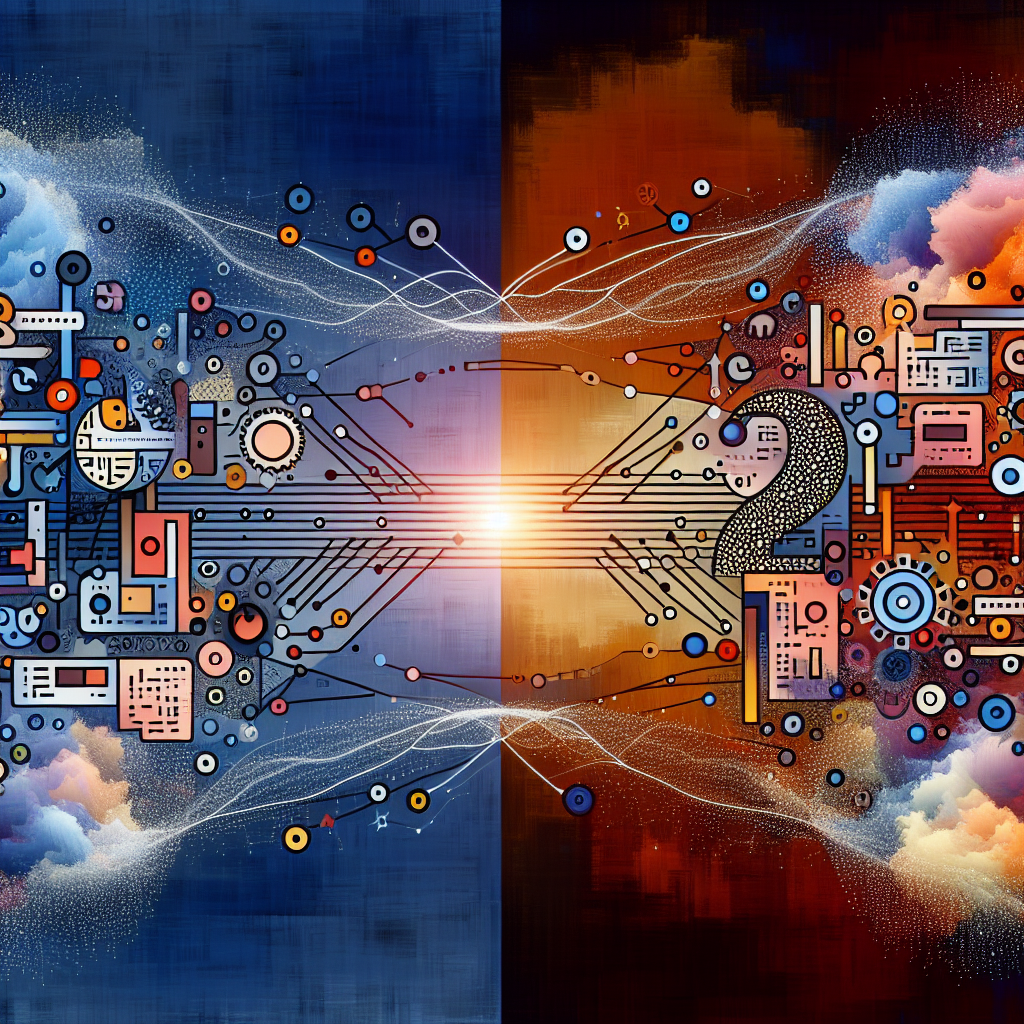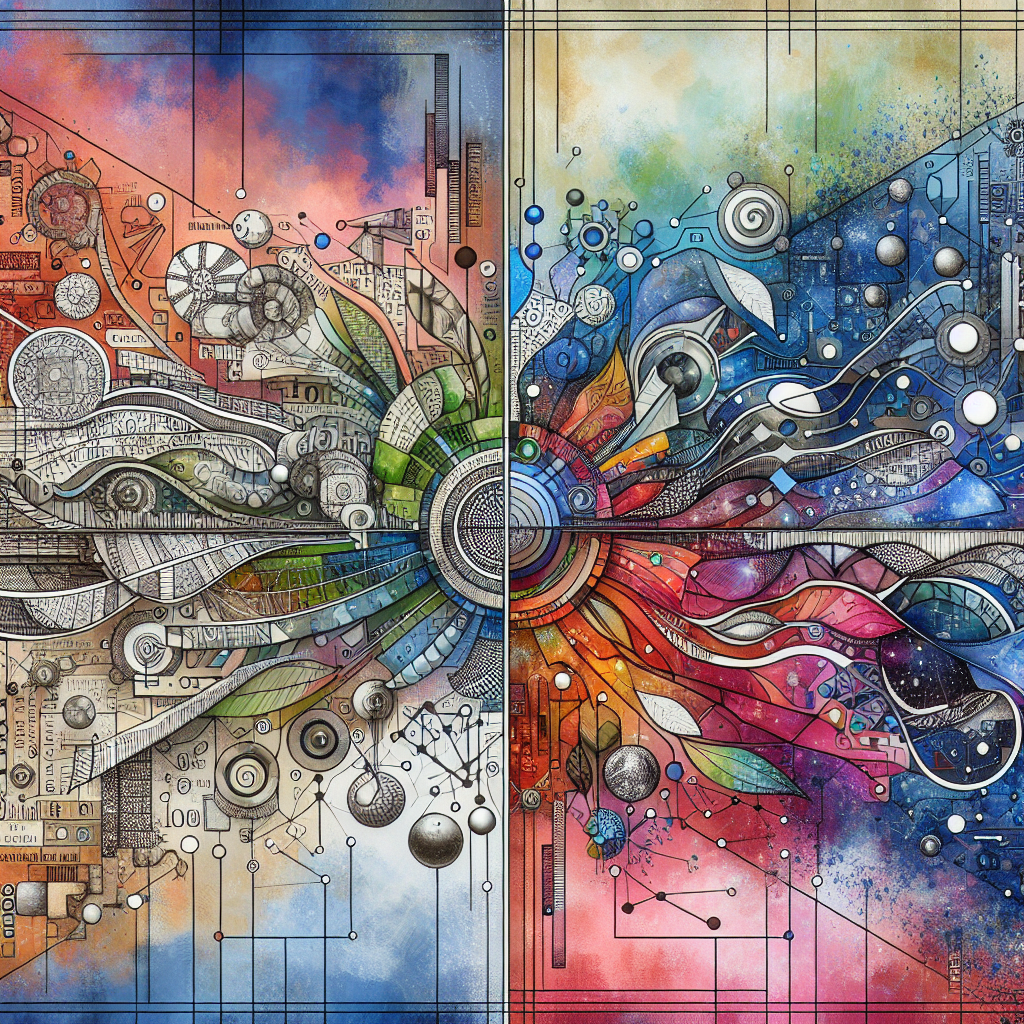-
Table of Contents
CLIP (Contrastive Language–Image Pre-training) is a cutting-edge model developed by OpenAI that bridges the gap between text and images through machine learning. It is designed to understand and interpret the content of images by associating them with natural language descriptions. This innovative approach allows CLIP to perform a wide range of visual tasks, such as image classification, object detection, and even generating textual descriptions of images, without the need for task-specific training data. By leveraging a large dataset of images and their corresponding text captions, CLIP learns to recognize the relationships between visual and textual information, enabling it to understand and process new images and texts in a contextually relevant manner. This breakthrough technology has significant implications for improving the efficiency and versatility of AI systems in understanding and interacting with the visual world.
Exploring CLIP: Bridging the Gap Between Text and Images

Title: CLIP: Connecting Text and Images
In the rapidly evolving field of artificial intelligence (AI), one of the most groundbreaking advancements has been the development of CLIP (Contrastive Language–Image Pre-training), a model designed by OpenAI that has significantly bridged the gap between textual and visual information. This innovative approach has not only enhanced the way machines understand our world but has also opened up new avenues for AI applications across various sectors. By effectively connecting text and images, CLIP has set a new benchmark in the realm of machine learning, offering a glimpse into the future of AI-driven technologies.
At its core, CLIP is a neural network that learns visual concepts from natural language descriptions. This learning process involves training the model on a vast dataset of images paired with captions, allowing it to understand and interpret the content of images in the context of the accompanying text. Unlike traditional models that require explicit labeling of images, CLIP leverages the richness of natural language, enabling it to grasp a wide array of visual concepts from a diverse set of descriptions. This method of training not only makes CLIP incredibly versatile but also significantly reduces the time and resources needed for model training.
One of the most remarkable aspects of CLIP is its ability to perform “zero-shot” learning. This means that once trained, CLIP can accurately recognize and categorize images it has never seen before, based solely on textual descriptions. For instance, if given a description of a “sunset over a mountain range,” CLIP can identify images matching this description without having been explicitly trained on such images. This capability is a monumental leap forward, as it allows for a much broader understanding of visual content, surpassing the limitations of previous models that could only recognize a limited set of pre-defined categories.
Furthermore, CLIP’s proficiency in connecting text and images has profound implications for various applications. In the realm of search engines, for example, CLIP can enhance image search functionality by allowing users to search for images using natural language queries, thereby improving the accuracy and relevance of search results. In the field of content moderation, CLIP can help identify and filter out inappropriate content by understanding the context in which images appear. Additionally, in the creative industry, CLIP can assist in generating visual content based on textual descriptions, offering a new tool for artists and designers.
Despite its impressive capabilities, CLIP is not without its challenges. The model’s reliance on the language used in training data means that biases present in the data can be reflected in the model’s outputs. OpenAI acknowledges this issue and emphasizes the importance of careful dataset curation and ongoing research to mitigate these biases. Moreover, the computational resources required to train and run CLIP are substantial, posing a barrier to widespread adoption.
In conclusion, CLIP represents a significant milestone in the quest to bridge the gap between text and images through AI. By understanding visual content in the context of natural language, CLIP has opened up new possibilities for machine learning applications, making it a pivotal development in the field. As research continues and the technology evolves, the potential of CLIP and similar models to transform our interaction with digital content is immense. With ongoing advancements, we can anticipate a future where AI seamlessly integrates textual and visual information, further blurring the lines between human and machine understanding.
The Impact of CLIP on Visual Search Technologies
Title: CLIP: Connecting Text and Images
In the realm of artificial intelligence, the ability to seamlessly connect text and images represents a significant leap forward, particularly in the development of visual search technologies. One of the most groundbreaking advancements in this area is the introduction of CLIP (Contrastive Language–Image Pre-training) by OpenAI. This innovative approach has not only redefined the boundaries of machine learning models but also significantly enhanced the capabilities of visual search technologies, thereby transforming the way we interact with digital content.
CLIP stands out by its unique methodology of understanding and interpreting the content of images in the context of natural language descriptions. Unlike traditional models that require extensive labeling of images to understand their content, CLIP learns from a diverse range of internet-collected images and their corresponding text descriptions. This method allows it to develop a more nuanced understanding of visual content, bridging the gap between textual descriptions and visual representations. Consequently, CLIP has the remarkable ability to understand images in a more human-like manner, recognizing a vast array of objects, scenes, and activities without the need for specific training on those categories.
The impact of CLIP on visual search technologies is profound. By leveraging CLIP’s capabilities, visual search engines have become significantly more powerful and versatile. Users can now search for images or products not just by keywords but also by using natural language descriptions or uploading images that serve as queries. This flexibility has greatly improved the user experience, making it easier for individuals to find exactly what they are looking for, even when they cannot precisely describe it in words.
Moreover, CLIP’s ability to understand and interpret images in the context of natural language has opened up new possibilities for content categorization and recommendation systems. For instance, e-commerce platforms can now offer more accurate product recommendations by analyzing the visual and textual content of products, thereby understanding the nuanced preferences of their customers. Similarly, social media platforms can utilize CLIP to better categorize and recommend content, enhancing user engagement by presenting more relevant and appealing visual content.
Another significant advantage of CLIP is its potential to reduce biases in visual search technologies. Traditional models often suffer from biases introduced during the training process, which can lead to skewed or unfair search results. However, by learning from a more diverse and extensive dataset of images and text, CLIP can help mitigate these biases, leading to more equitable and accurate search outcomes.
In conclusion, the introduction of CLIP represents a pivotal moment in the evolution of visual search technologies. Its innovative approach to connecting text and images through natural language understanding has not only enhanced the capabilities of these technologies but also opened up new avenues for their application. From improving user experience in visual searches to enabling more accurate content recommendations and reducing biases, the impact of CLIP is both far-reaching and profound. As we continue to explore the potential of this technology, it is clear that CLIP will play a crucial role in shaping the future of how we interact with digital content.
Innovations in AI: How CLIP Enhances Content Discovery and Curation
In the rapidly evolving landscape of artificial intelligence, one of the most groundbreaking innovations has been the development of CLIP (Contrastive Language–Image Pre-training), a model that has significantly enhanced the way we discover and curate content. This model, developed by OpenAI, represents a paradigm shift in how AI understands and connects text and images, offering a more intuitive and seamless interaction between users and digital content. As we delve into the intricacies of CLIP and its implications for content discovery and curation, it becomes evident that this technology is not just an advancement but a revolution in the field of AI.
CLIP operates on a simple yet profound principle: it learns visual concepts from natural language descriptions. This learning approach allows it to understand images in much the same way humans do, by associating them with the text that describes them. Unlike traditional models that require explicit labeling of images, CLIP can interpret and categorize images based on the vast array of text available on the internet. This capability enables it to perform a wide range of tasks, from simple image recognition to complex content curation, without the need for task-specific training data.
One of the most compelling aspects of CLIP is its versatility. It can be applied to various domains, including search engines, social media platforms, and digital libraries, to enhance the user experience by providing more relevant and contextually appropriate content. For instance, when integrated into a search engine, CLIP can improve the accuracy of image search results by understanding the nuances of the search query. Similarly, on social media platforms, it can help in curating personalized content feeds by accurately interpreting the visual content and its relevance to the user’s interests.
Moreover, CLIP’s ability to bridge the gap between text and images has profound implications for content creators and curators. It offers a more nuanced understanding of the relationship between visual and textual information, enabling creators to design content that resonates more deeply with their audience. For curators, it provides powerful tools for organizing and categorizing content in ways that were previously impossible, making it easier to manage large volumes of digital assets.
However, the impact of CLIP extends beyond improving content discovery and curation. It also opens up new possibilities for accessibility, allowing visually impaired users to better understand and interact with visual content through descriptive text. This aspect of CLIP underscores the broader societal benefits of AI innovations, highlighting how technology can be leveraged to create more inclusive digital environments.
As we look to the future, the potential applications of CLIP and similar models are vast. From enhancing educational resources with more interactive and engaging content to revolutionizing the way we interact with digital advertisements, the possibilities are limited only by our imagination. Yet, as with any technological advancement, it is crucial to approach the deployment of CLIP with a mindful consideration of ethical implications, particularly regarding privacy and data security.
In conclusion, CLIP represents a significant leap forward in the field of artificial intelligence, offering a more natural and intuitive way to connect text and images. Its impact on content discovery and curation is just the beginning, as its full potential is yet to be realized. As we continue to explore and refine this technology, it is clear that CLIP will play a pivotal role in shaping the future of digital content, making it more accessible, relevant, and engaging for users worldwide.

